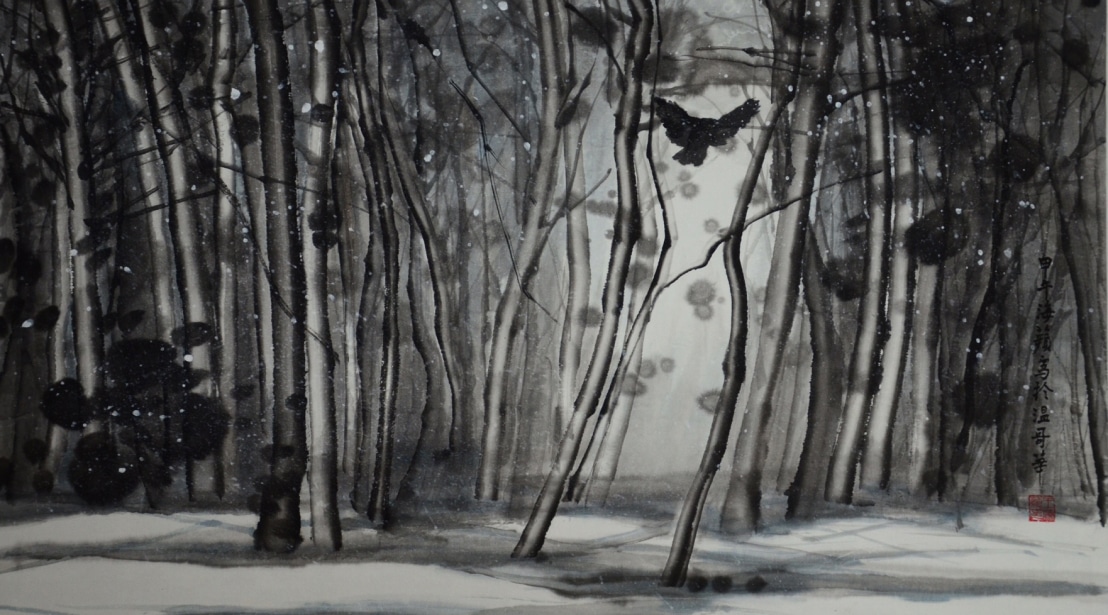The world of art is a vast canvas painted with countless techniques, each reflecting the culture and history from which they originate. Among these, Chinese watercolour stands as a testament to the delicate beauty and rich tradition of China. In this blog post, we will delve into the captivating world of Chinese watercolour, uncovering the process, techniques, and the cultural significance that make it a cherished art form.
The Essence of Chinese Watercolor
Chinese watercolor, also known as “shui-mo hua” (水墨画), is a traditional painting technique that dates back over a thousand years. This art form embraces the concept of harmony with nature, simplicity, and capturing the spirit of a subject rather than its literal representation. The process involves a meticulous dance of brush, ink, and paper, resulting in ethereal, flowing paintings often showcasing landscapes, flowers, birds, and other natural elements.
Materials and Tools
- Brushes: Chinese watercolor brushes come in various sizes and shapes. They are traditionally made from animal hair, such as goat, wolf, or rabbit, offering a wide range of textures and strokes.
- Ink: Chinese ink, often made from soot or charcoal, is ground into a fine powder and mixed with water to create various tones. The quality of the ink greatly affects the final outcome.
- Paper: Xuan paper (宣纸) is the preferred choice for Chinese watercolor. This rice paper is known for its absorbency and ability to handle the flow of ink beautifully.
- Colors: Chinese watercolor paints are typically made from mineral pigments or plant-based dyes. Artists often use a limited color palette, relying on shades of black, gray, and a few select colors.
The Creative Process
- Preparing the Workspace: Chinese watercolor requires a calm and organized workspace. The artist must have easy access to water, ink, brushes, and paper.
- Loading the Brush: Artists load their brushes with ink, adjusting the water-to-ink ratio to achieve the desired tone. This process requires skill, as it dictates the flow and intensity of the strokes.
- Contemplation: Before touching brush to paper, a moment of contemplation is common. Artists visualize their subject and the desired outcome.
- Painting Techniques: Chinese watercolor is characterized by various brush techniques, including “xieyi” (写意), which emphasizes expressive, freehand strokes, and “gongbi” (工笔), known for its meticulous detail and precision.
- Flow and Balance: The heart of Chinese watercolor lies in the delicate balance between control and spontaneity. Artists aim to capture the essence of their subject with fluid strokes that convey movement and life.
Cultural Significance
Chinese watercolor is deeply rooted in Chinese culture and philosophy. It draws inspiration from traditional Chinese calligraphy, where brushwork embodies the artist’s inner spirit. This art form is often associated with tranquility, balance, and harmony with nature—core principles of Chinese philosophy and aesthetics.
Conclusion
Chinese watercolour is not just a painting technique; it’s a profound artistic journey that connects the artist with the natural world and the depths of Chinese culture. With its blend of simplicity and complexity, it continues to inspire artists and art enthusiasts around the globe, offering a timeless glimpse into the heart of China’s artistic heritage. Whether you’re an aspiring artist or an admirer of beauty, Chinese watercolour invites you to explore the world with brush and flow, one stroke at a time.

